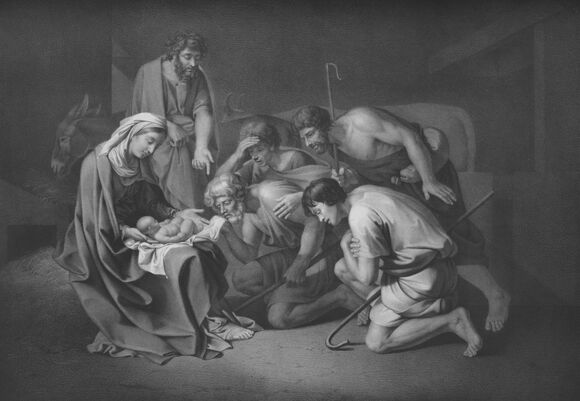Reflection
Reflection for Sunday 28th December, 2025
The Holy Family
Holy Family Sunday
Jesus spent thirty years in family life but only three years in public ministry. A ratio of 10:1, surely a statement of the importance of the family. Actions speak more loudly than words.
Today’s liberal agenda pursues individual rights to the neglect of responsibilities. It may be a crime to slap a child but not to walk out on one’s spouse and children. The most basic responsibility of both parents is towards their children.
A great Jewish writer, Jonathan Sacks, claimed that the greatest task facing our culture today is turning masochistic males into responsible fathers.
 “Let the message of Christ, in all its richness, find a home with you.”
“Let the message of Christ, in all its richness, find a home with you.”The Family School
Since the family is still the basic unit of society, good family life is the foundation of a stable society. In our rapidly changing society, family life is under pressure. The most important school one will ever attend is the family. It is there, more than any other place, that one learns the skills of interpersonal relationships.
A foundational lesson is learned in the way a child is welcomed into the world. The seeds of self-worth, trust, and reliance on others are planted in the brain and heart as the cries and needs of the little child are heard and answered. The warm hugs that the child receives are deeply embedded in the subconscious memory.
Bigger than ME
As the child grows, he/she learns that the world is bigger than ME. It’s not all about my rights: others have rights too. “You can’t have this, it belongs to your brother.” “Stop crying, you’ll wake the baby.” Learning that others have rights will be the beginning of responsibility.
Today’s Second Reading, Colossians 3: 12-21, contains seeds for a season of sermons on the qualities of interpersonal relationships. “Bear with one another; forgive each other as soon as a quarrel begins. The Lord has forgiven you; now you should do the same. Over all these clothes, to keep them together and complete them, put on love. And may the peace of Christ reign in your hearts, because it is for this that you were called together as parts of the one body. Always be thankful.”
In the family we learn the reality of love, trust, sharing, respect for others, awareness of the rights of others, the need for gentleness and patience, how to handle conflict, the need for forgiveness, fidelity etc.
“Let the message of Christ, in all its richness, find a home with you.” The family is the cradle of faith, handing on the Christian story, teaching the basic prayers, linking up with the local parish, celebrating the liturgical year’s festivals and seasons. It is said that faith is not taught but caught. And there is great wisdom in the African saying that it takes a village to rear a child. Maybe that is why Jesus spent thirty years in family life and only three in his public ministry.
Search
Emergency Phone (urgent calls)
085 868 5779
Reflections
- Lent 7 - Is Easter just for children?
- Lent 6 - Why should I hope in the Church?
- Lent 5 - Is it wrong to be joyful?
- Lent 4 - Should we hope in each other?
- Lent 3 - Why do we experience suffering?
- Lent 2 - What does Baptism mean to me?
- Lent 1 - Do I feel loved?
- The Servant King
- A Thiarna dean Trocaire
- Ag Críost an Síol
- Alleluia to the Lamb
- Make me a channel
